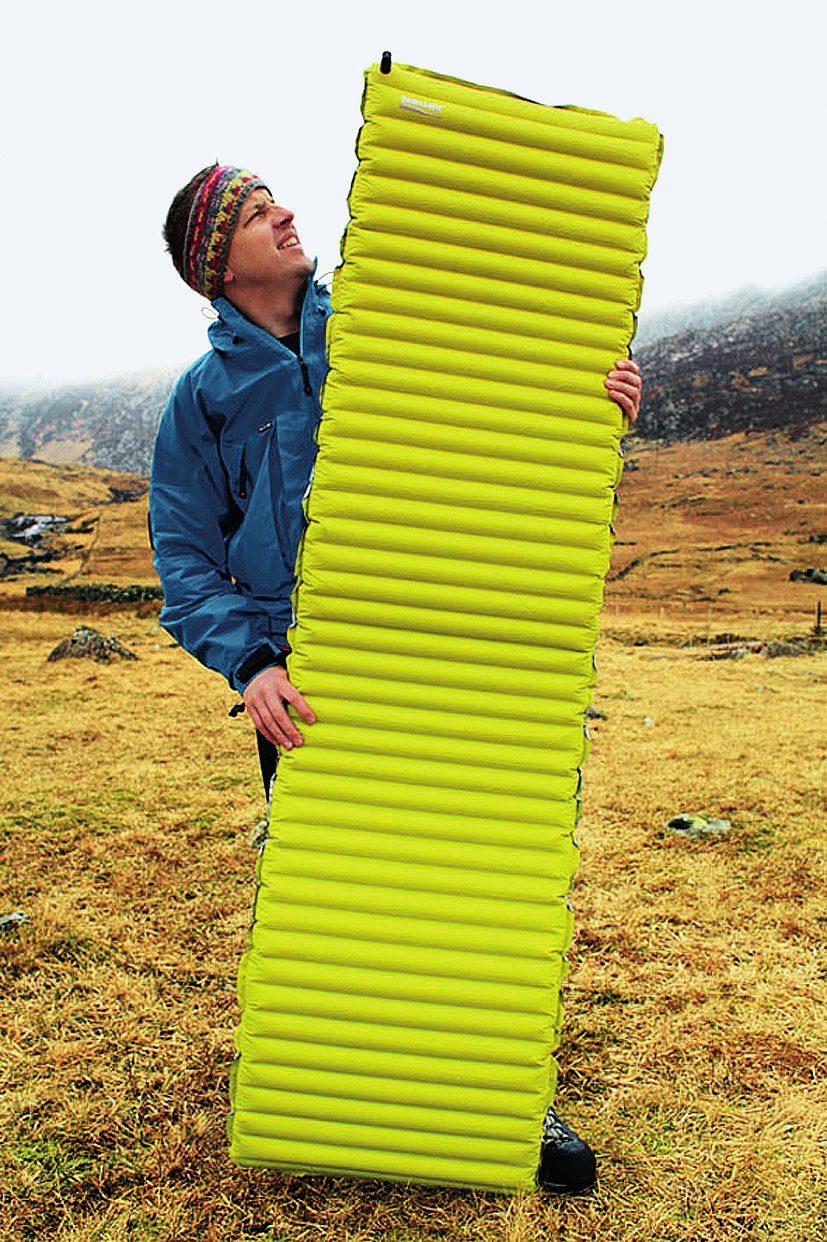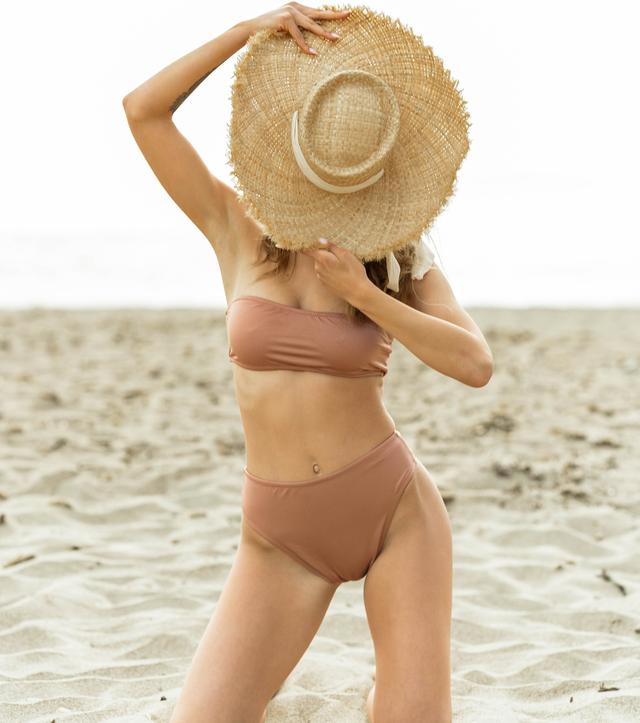Mats and insulation. Sleeping on the floor to me, plim…!
I remember my first night in the bush. It was with my best friend at the time, his father and a borrowed sleeping bag. We carried some canvas backpacks with many pockets closed with leather straps and buckles of those with the spike. Attached to this was a rolled-up strip of carpet that was to serve as a mat.
My mat on that outing was… a pointed stick. I drew a square with it, cleared the ground of weeds and stones, and managed to improvise an acceptable place to put the sack. It was an Easter vacation in the late 60's, still with cool nights, so I didn't have a great time, but, yes, I didn't get off the “mat”. He had drawn a very large rectangle. From then on the exits followed one another. And I wanted my piece of carpet. My father, a tailor by profession, made us some fabric mattresses filled with the same wadding that he used to fill coats, which did not last long.
The first insulators arrive
Until the first “technical” insulator arrived in our sports stores in the 70s – if my memory serves me correctly, one from Altus that was a plate a couple of centimeters thick of a material similar to what is used under of the floating platform– the most comfortable resource to sleep in the mountains without breaking the bank was the beach-type air mattress, but made of canvas instead of plastic, which punctured less. But they were so heavy that it was too lazy to put them in the backpack! And they didn't protect much from the cold either: how could such a large volume of air be heated?! The weight problem was solved by a nylon model that was relatively bulky and weighed a third of the canvas mats, but they did not solve the problem of the cold and were just look at me and don't touch me.
Fortunately for our long-suffering loins, since those heroic times the industry has evolved a lot and improvements are evident from season to season, due in large part to the enormous competition in the market. Manufacturers like Thermarest, Trangoworld, Vaude, Sea to Summit... compete year after year to get products that help us sleep comfortably without carrying much more weight.
"Since those heroic times of the carpet or the beach mat, the industry has evolved a lot and improvements are evident from season to season"
The evolution
There are three main families of mats for mountain activities: the traditional foam or EVA mats, the inflatable ones (direct heirs of the t-shirt but much improved) and the self-inflatable ones. It is in these last two groups where the evolution has been most notable in recent years.
and then tendou teaches him how to properly julienne carrots and they make soup together and kiss more or whatever. haha gay
— anomalocaris 🪱 Fri Aug 04 20:29:40 +0000 2017

The former are made of foam (foam in English; hence they are known as foam) polyurethane, polyethylene or EVA (ethylene vinyl acetate). This foam can be open cell. It is what is commonly known as foam rubber and is used in the manufacture of cheap mattresses. It is not used in the manufacture of mats because they do not retain air when pressed, so they need a large volume to provide minimal padding, and they absorb water.
Closed cell foams are used in the construction of insulating mats. In these, the air remains enclosed in the bubbles, which means that it better conserves the heat it accumulates and that it does not absorb water. Closed cell mats have evolved more in form than in composition itself. The flat rectangle has gone to rectangles with reliefs, waves, channels and "egg cups" whose purpose is to trap hot air between the body and the mat.
The Ridge-rest and Z Lite, both from Thermarest, are undoubtedly the best known.
The modern inflatable mats for mountains are, as we said above, an evolution of the classic camping mats. Manufacturers have gone to great lengths to achieve comfort and insulation at an acceptable weight (between 300 and 500g); yes, they are delicate and have not so light prices.
Companies such as Exped, Thermarest, Sea to Summit or Trangoworld in our country have made significant improvements by introducing cells with insulating laminates in inflatable mattresses, as in the case of Thermarest's 2009 Neo Air mattress, or by incorporating natural thermal insulators such as down in the case of the Swiss manufacturer Exped, or synthetics such as Thermolite in the case of the Australian company Sea to Summit, and Primaloft in the case of Trangoworld.
The self-inflatable ones are, in fact, a highly evolved combination of the inflatable ones and the foam ones. The first of its kind came out of the Thermarest factory. These mattresses combine the comfort provided by an air mattress with the insulating capacity of foam, which, in different kinds and ways (sandwiches, cells, etc.), is placed inside.
The self-inflating thing is a half truth. It is assumed that thanks to the recovery capacity that the foam has when it is no longer under pressure (rolled up), it can inflate itself when the valve is opened, but all of us who have a self-inflating mattress know that it is always necessary to give it a "nudge". They are rectangular, symmetrical and of different thicknesses (from 2 to 10 cm): the thicker, the more comfortable, naturally, but also heavier.
The weight range is from 600 g to more than 2 kg. From 1 kg they are more suitable for camping than for mountaineering or hiking. There are now truly lightweight models that take up no more than a one liter canteen when folded.
When choosing a mat, consider the following factors:
It is not the same to look for a mattress for camping than to go on a bike trip or a trekking. In the first case you can afford a heavier mat. In general terms, self-inflating and inflatable mats are more comfortable than mats and once folded they can be stored inside a backpack or pannier, but they are very delicate and cannot be placed directly on the ground. A good idea is to use them in combination with a fine mat (the aluminized type are very light).
Although comfort is something that depends a lot on personal circumstances, it is clear that it depends very directly on two dimensions: thickness and length. The “fatter” a mat or mat is, the more comfortable it will be, but also heavier and bulkier… except in the case of the latest generation inflatables that reach high levels of comfort with very small weights and volumes. If you decide on a self-inflating one, do not buy one that is less than 2 cm thick because it will provide you with little insulation and little comfort.
As for the length, it is evident that the best thing is that nothing of the body remains outside of it, but the truth is that for an average-sized person a self-inflating 150 cm is more than enough, and we say this knowingly . The part of the legs that is outside can be perfectly isolated with the backpack or with clothes. But ultimately, this is an issue that must be assessed together with the rest of the team. Undoubtedly, with a wide and thick mat you will wake up more rested, stronger and in better condition to load it again another day.
The mats not only have to prevent pebbles and branches from getting stuck in our backs; they also have to prevent the cold from the ground from reaching us. It is what is called isolation. Look on the label of the mat you are going to buy for information called R-Value. This is a scale that indicates its insulating capacity. An R-value of up to 1 indicates low capacity and is only acceptable for a mat to be used in the summer. Values between 3 and 4 indicate that we are dealing with a multi-season mat. For winter conditions we need values above 5.
slimming diet
The quest for lightness has become an obsession for mat manufacturers. The "lightest" idea that we know so far is due to the North American firm Klymit, which more than a mat is a "network" of inflatable tubes that isolates the most vulnerable points of the body. The long version weighs 258 grams and the short one only 173. Once deflated they occupy a minimum volume. Light it is, yes, but users recognize that they are not as comfortable as other inflatable mattresses and that they insulate rather little, although the latter can be solved by using an EVA mat.
They are a bit spartan, but for someone used to using simple insulation who wants to gain comfort without adding much weight, these “mats” are a very attractive alternative, in particular the small X-Lite.


